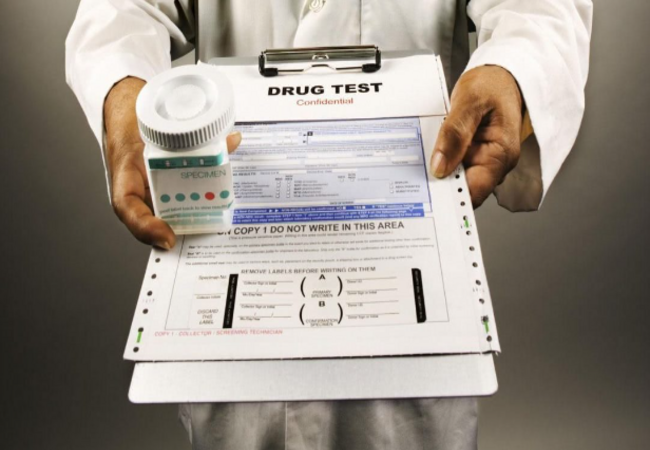Drug testing is often used to improve workplace safety, especially in industries where employee health and productivity are at risk. The most common type of drug test is a urine sample, Drug testing options commonly known as a urinalysis.
The urine tests screen for many illicit drugs, as well as some prescribed medicines such as benzodiazepines, opiates, and amphetamines. However, a urinalysis has a short detection window.
Urine
One of the types of drug testing is a urine test that checks for the presence of illegal drugs and many prescription drugs that are misused (for example, taken more often or in higher doses than prescribed). This type of testing is typically required by law in certain types of work-relate situations, such as if you are an air traffic controller or truck driver. Urine tests are a quick and inexpensive way to screen for the most common drugs. A candidate visits a collection site and provides a urine sample in a special cup. The sample goes through a strict chain of custody, making it difficult to tamper with.
The urine is screened using immunoassay and sent to the lab for confirmation of gas chromatography-mass spectrometry (GC-MS). These tests typically test for marijuana, cocaine, methamphetamine, amphetamines, PCP, methadone, opiates, and some opioid metabolites. They can also be use to detect some sedatives, barbiturates, and benzodiazepines, as well as some other commonly abuse substances, including methadone, oxycodone, and propoxyphene. When ordering this type of test; it is essential to select one that includes a panel for opiate metabolites, which can give false positive results for morphine and oxycodone if they are taken together. Drug testing options medical review, which determines whether a person has a legitimate medical reason for a positive result; can help eliminate these false positives.
Hair
Whenever a person uses drugs, their body breaks them down and releases byproducts into the bloodstream. These byproducts are metabolites and can be detecte in a hair sample. Since everyone metabolizes drugs at a predictable rate, these metabolites can be use to identify previous drug use. Unlike urine tests, which can only detect recent (within a few days) drug use; hair tests can identify drug use from months or even years ago.
The length of time that common drugs remain detectable in the hair varies depending on the frequency and duration of drug use; body mass, drug tolerance, and hydration levels. However, research has shown that hair testing is more accurate than urine testing in detecting current marijuana and heroin use. It also has better specificity than urine testing in detecting benzodiazepines and cocaine use. A hair specimen is taken from the scalp for a hair drug test. The sample must be at least 1.5 inches long and have the thickness of a pencil to be suitable for testing. Drug testing options sample is then sent to a laboratory for further analysis using gas or liquid chromatography and mass spectrometry. Some people may try to trick a hair drug test by shaving; or bleaching their hair before the test, but these methods have been proven ineffective.
Saliva
Often used as an alternative to urine tests for pre-employment screening, oral fluid drug testing, also known as saliva or mouth swab test; is a type of instant drug test that can detect the presence of controlled substances in a person’s system. Mouth swab samples can be instantly analyze on-site or sent to a lab for a more in-depth analysis. Saliva tests are less likely to be affecte by mouthwash or chewing gum and can detect many drugs and substances. However, it’s important to note that saliva test results don’t necessarily indicate impairment or intoxication, and the drug detection window for many drugs is only a few hours.
For example, marijuana can stay in your system for up to four weeks and may not show up on a saliva test. Like urine drug testing, oral fluid tests can be use for pre-employment, random, and post-accident drug screening. They can detect a wide variety of drugs, including alcohol; barbiturates, benzodiazepines, cocaine, ecstasy, heroin, marijuana (THC), methadone, methamphetamines, and phencyclidine. Saliva tests are more accessible to gather than urine and can provide accurate, immediate results. They are less expensive and more resistant to adulteration and Drug testing options substitution than urine tests.
Blood
Although some professional sports teams and young athletes use blood drug testing; this method is only sometimes use in the workplace. This is because blood tests are invasive and require medical personnel to administer them. As a result, they are more expensive than urine or saliva tests. Drug testing options additionally, certain medications can interfere with results. In addition, blood tests have a short detection window for current drug usage. While drugs can remain in the urine for several days and in hair for months, blood test results only provide a snapshot of drug use within the last few hours. This makes them best used at accident; sites to establish whether those involved were under the influence of drugs or alcohol.
Blood tests can also detect drug testing options more drugs than urine and saliva tests. This includes prescription medications, such as oxycodone, methadone, gabapentin, and carisoprodol. They can also see ethanol (alcohol). Because of their wide range of uses, blood drug tests are commonly use to test for a high level of drugs in the body, especially opiates and heroin. Drug testing options they are also used to determine if patients are taking their prescribe medicines properly; as they can provide accurate and detaile information about drug levels in the blood. This is why they are a popular option for doctors who need to check the level of specific medications in their patients’ systems.




